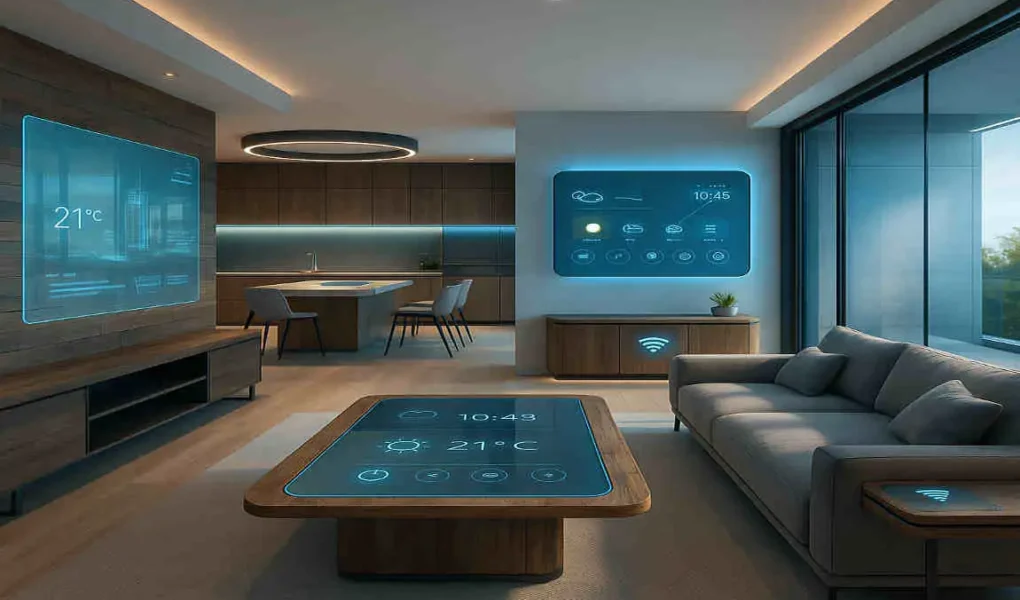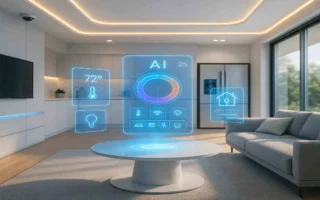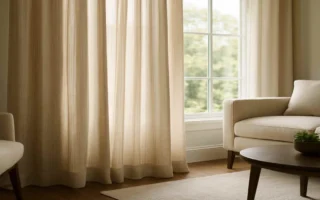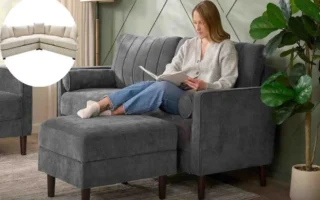Welcome to the future of home design! As we step into 2025, the world of interior design is undergoing a remarkable transformation. Smart home interior design is no longer a futuristic concept; it’s becoming a reality that’s reshaping how we live, work, and relax in our homes.
Understanding Smart Home Interior Design in 2025
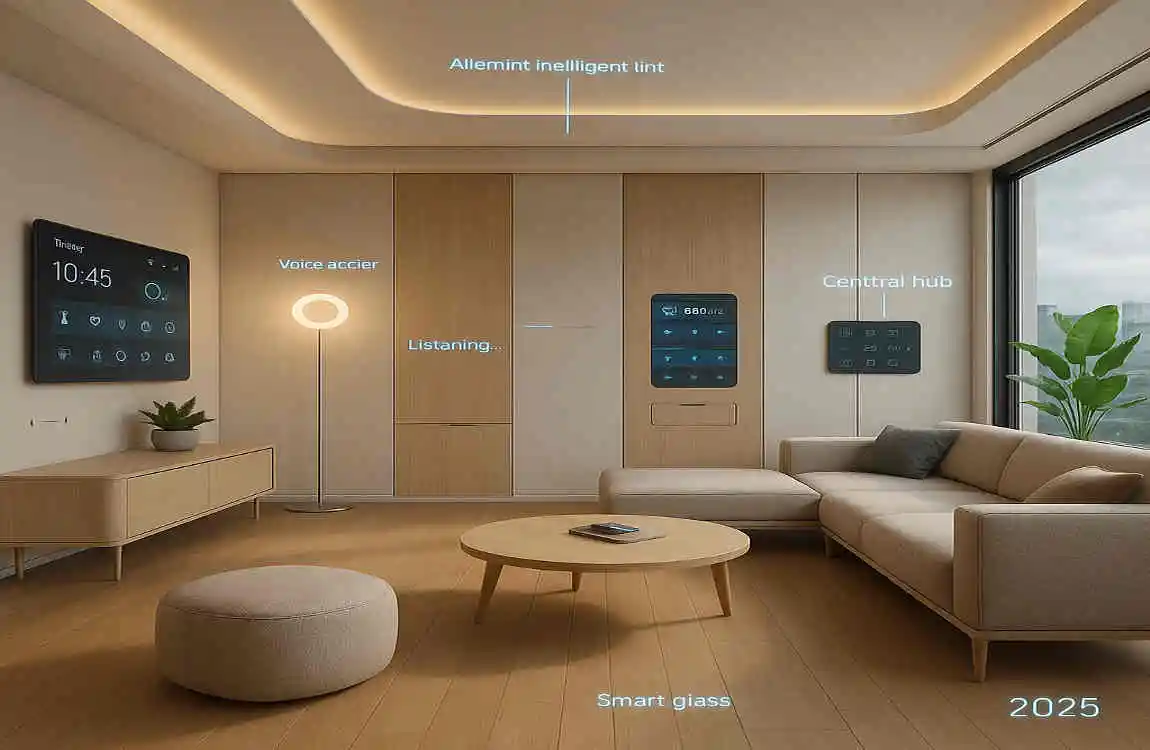
What is Smart Home Interior Design?
At its core, smart home interior design is about seamlessly integrating technology into our living spaces to enhance comfort, convenience, and efficiency. It’s not just about adding smart devices to your home; it’s about designing a cohesive, functional space that leverages technology to enhance your daily life.
How Technology Shapes Modern Home Interiors
Technology is the driving force behind the evolution of home design. From voice-activated assistants to smart appliances and lighting systems, technology is enabling us to create homes that are more intuitive, responsive, and personalized than ever before. In 2025, we’re seeing a shift towards even more advanced, integrated smart home solutions that are transforming how we interact with our living spaces.
The Fusion of Functionality, Aesthetics, and Connectivity
One of the key aspects of smart home interior design in 2025 is the seamless integration of functionality, aesthetics, and connectivity. It’s not enough for a smart home to be technologically advanced; it also needs to be visually appealing and easy to use. Designers are focusing on creating spaces that are both beautiful and functional, with technology playing a central role in enhancing the overall experience.
Why 2025 is a Pivotal Year for Tech-Integrated Living Spaces
2025 marks a significant milestone in the world of smart home interior design. With advancements in artificial intelligence, the Internet of Things (IoT), and other cutting-edge technologies, we’re seeing a new wave of innovations that are making smart homes more accessible and practical than ever before. This year, we’re witnessing a shift towards more personalized, user-centric smart home solutions tailored to our individual needs and preferences.
Trending Innovations in Smart Home Interior Design 2025
Voice-Activated and AI-Powered Home Automation Systems
One of the most exciting trends in smart home interior design for 2025 is the rise of voice-activated and AI-powered home automation systems. These systems allow you to control various aspects of your home, from lighting and temperature to Security and entertainment, using simple voice commands or intuitive AI interfaces.
Smart Lighting Solutions: Adaptive, Human-Centric Lighting for Wellness and Ambiance
Lighting plays a crucial role in creating the right ambiance and promoting wellness in our homes. In 2025, we’re seeing a surge in innovative lighting solutions that are designed to adapt to our needs and preferences throughout the day. These human-centric lighting systems can help regulate our sleep-wake cycles, boost our mood, and create the perfect atmosphere for any occasion.
Integrated Smart Appliances with Energy Efficiency
Smart appliances are another key trend in smart home interior design for 2025. From refrigerators and ovens to washing machines and dishwashers, these appliances are designed to be more energy-efficient and user-friendly than ever before. With features like remote control, energy monitoring, and automatic maintenance alerts, smart appliances are making our lives easier and more sustainable.
Advanced Climate Control and Smart HVAC Systems
Keeping our homes at the perfect temperature is essential for comfort and energy efficiency. In 2025, we’re seeing a rise in advanced climate control and innovative HVAC systems that can learn our preferences and adapt to our needs. These systems can help us save energy, reduce our carbon footprint, and create a more comfortable living environment.
Touchless Entry and Biometric Security Innovations
Security is a top priority for any homeowner, and in 2025, we’re seeing a surge in touchless entry and biometric Security innovations. From fingerprint scanners and facial recognition to smart locks and Security cameras, these technologies are making it easier than ever to keep our homes safe.
Augmented Reality (AR) and Virtual Reality (VR) for Interior Customization and Visualization
Designing and visualizing your dream smart home has never been easier, thanks to the power of augmented reality (AR) and virtual reality (VR). These technologies let you experiment with different layouts, furniture, and decor in a virtual space before making any changes to your real home. In 2025, we’re seeing a rise in AR and VR tools that are making interior customization and visualization more accessible and user-friendly than ever before.
Use of IoT (Internet of Things) to Connect All Devices Seamlessly
The Internet of Things (IoT) is the backbone of any smart home, and in 2025, we’re seeing a rise in IoT solutions that seamlessly connect all our devices. From smart thermostats and lighting systems to Security cameras and entertainment devices, IoT technology is enabling us to build a more integrated, efficient smart home ecosystem.
Emerging Materials and Surfaces that Interact with Technology
In 2025, we’re seeing a rise in emerging materials and surfaces that are designed to interact with technology in new and exciting ways. From smart glass that can change opacity at the touch of a button to interactive walls that can display digital art or serve as touchscreens, these materials are pushing the boundaries of what’s possible in smart home interior design.
Modern Aesthetics in Smart Homes — Style Meets Technology
Minimalist and Sleek Designs Enhancing Tech Features Discreetly
One of the key trends in modern smart home aesthetics for 2025 is the rise of minimalist, sleek designs that discreetly enhance tech features. These designs focus on clean lines, uncluttered spaces, and seamless integration of technology into the home’s overall look and feel.
Use of Natural Materials Blended with Smart Tech to Maintain Warmth and Comfort
While technology is increasingly important in our homes, it’s essential to maintain a sense of warmth and comfort. In 2025, we’re seeing a rise in the use of natural materials—wood, stone, and textiles—blended with smart tech to create a more inviting, cozy living environment.
Color Palettes Favored in 2025 Smart Home Interiors
Color plays a crucial role in setting the tone and ambiance of any living space. In 2025, we’re seeing a shift towards more neutral, earth-toned color palettes that are inspired by nature and technology. From soft grays and warm beiges to cool blues and tech-inspired metallics, these colors are creating a more calming and sophisticated atmosphere in smart homes.
Furniture that Integrates Smart Technology without Compromising Style
Furniture is another key element of smart home interior design, and in 2025, we’re seeing a rise in pieces that integrate innovative technology without compromising style. From bright sofas that can adjust to your preferred seating position to coffee tables with built-in charging stations and smart mirrors that can display the weather or your daily schedule, these pieces are making our lives more convenient and connected.
Modular and Multifunctional Furniture for Adaptable Tech Spaces
As our homes become more tech-savvy, we’re seeing a rise in modular and multifunctional furniture that can adapt to our changing needs. In 2025, we’re seeing a surge in pieces like brilliant desks that transform into standing workstations, modular shelving systems that can be reconfigured to suit different spaces, and multifunctional furniture that serves multiple purposes in a single piece.
Smart Mirrors, Art Installations, and Decor with Embedded Tech Features
In 2025, we’re seeing a rise in smart mirrors, art installations, and decor pieces that are embedded with tech features. From smart mirrors that can display your daily schedule or the weather to art installations that can change colors and patterns based on your mood or the time of day, these pieces are adding a new level of interactivity and personalization to our living spaces.
Creating Tech-Integrated Living Spaces
Planning and Zoning Smart Home Interiors for Maximum Efficiency
Creating a tech-integrated living space starts with careful planning and zoning. In 2025, we’re seeing a rise in smart home designs that prioritize efficiency and functionality, with dedicated zones for specific activities and needs. From bright kitchens and living rooms to bedrooms and home offices, these spaces are designed to make the most of the latest smart home technologies.
Designing Smart Kitchens: Appliances, Lighting, and Interactive Surfaces
The smart kitchen is the heart of any home, and in 2025, we’re seeing a rise in bright kitchen designs that incorporate the latest in appliances, lighting, and interactive surfaces. From smart refrigerators that can keep track of your grocery list to interactive countertops that can display recipes or serve as cutting boards, these features are making cooking and meal prep more convenient and enjoyable than ever before.
Tech-Savvy Living Rooms: Entertainment, Connectivity, and Control Hubs
The living room is where we relax, entertain, and connect with others, and in 2025, we’re seeing a rise in tech-savvy designs that prioritize entertainment, connectivity, and control. From smart TVs and sound systems to bright lighting and climate control, these features are creating a more immersive and personalized living room experience.
Bedrooms Optimized for Wellness: Smart Sleep Technology and Ambient Control
Getting a good night’s sleep is essential to our health and well-being, and in 2025, we’re seeing a rise in bedroom designs optimized for wellness. From innovative mattresses that adjust to your preferred sleeping position to ambient lighting and climate control systems that help regulate your sleep-wake cycle, these features are creating a more restful, rejuvenating sleep environment.
Bathrooms with Touchless and Water-Saving Smart Fixtures
The bathroom is another key space in any home, and in 2025, we’re seeing a rise in designs that incorporate touchless, water-saving, bright fixtures. From smart toilets that can adjust to your preferred water temperature and pressure to touchless faucets and showers that can help conserve water, these features are making our bathrooms more hygienic and sustainable.
Home Offices Enhanced with Smart Productivity Tools and Ergonomic Design
With more people working from home than ever before, the home office has become a crucial space in any smart home. In 2025, we’re seeing a rise in designs that incorporate innovative productivity tools and ergonomic design features. From brilliant desks that can adjust to your preferred height and angle to bright lighting and climate control systems that can help boost your focus and productivity, these features are creating a more comfortable and efficient work environment.
Outdoor Living Spaces Embracing Smart Irrigation, Lighting, and Security
Our outdoor living spaces are an extension of our homes, and in 2025, we’re seeing a rise in designs that embrace smart irrigation, lighting, and Security features. From innovative irrigation systems that can help conserve water and keep your lawn and garden healthy to bright lighting and Security systems that can help keep your outdoor spaces safe and inviting, these features are creating a more connected and enjoyable outdoor living experience.
Benefits of Smart Home Interior Design in 2025
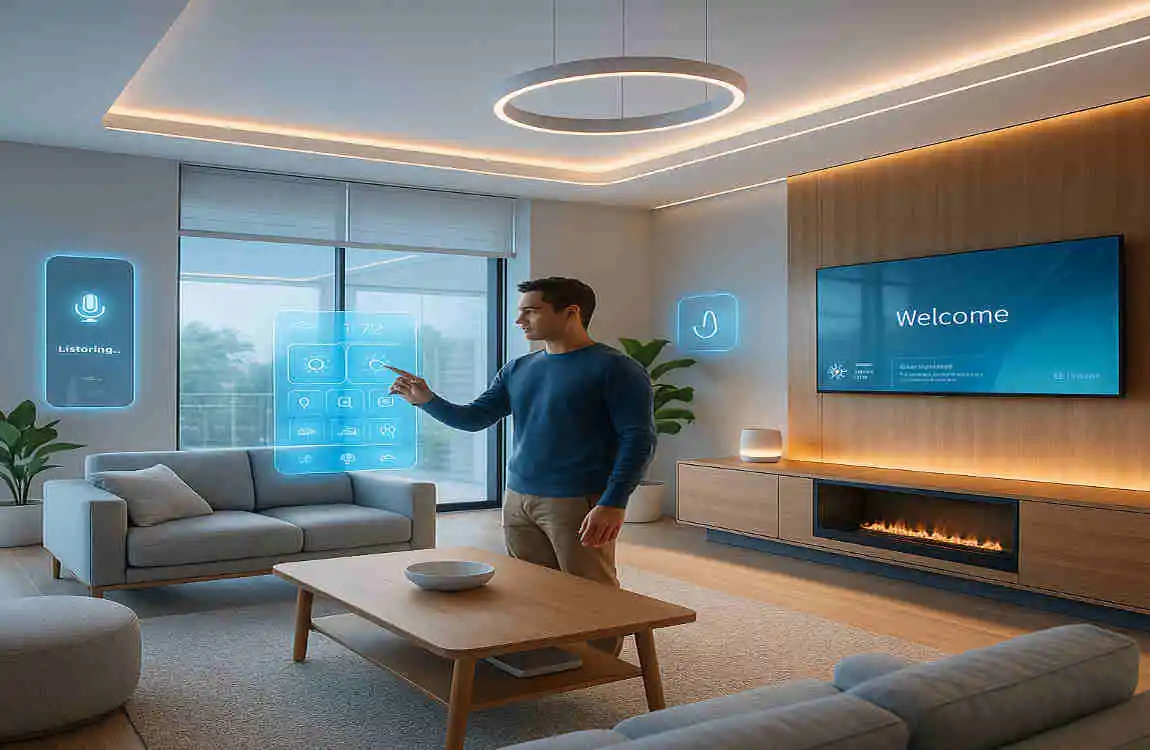
Convenience and Enhanced Lifestyle through Automation
One of the most significant benefits of smart home interior design in 2025 is the convenience and enhanced lifestyle it offers through automation. With smart home systems that can learn our preferences and adapt to our needs, we can enjoy a more seamless and effortless living experience. From automatically adjusting the temperature and lighting to managing our schedules and reminding us of essential tasks, these features are making our lives easier and more enjoyable.
Energy Savings and Sustainability Impacts
Another key benefit of smart home interior design in 2025 is the potential for energy savings and sustainability impacts. With smart appliances, lighting, and climate control systems designed to be more energy-efficient, we can reduce our carbon footprint and save money on utility bills. From smart thermostats that can learn our heating and cooling preferences to intelligent lighting systems that can adjust to the time of day and our activities, these features are helping us live more sustainably.
Enhanced Home Security and Safety Measures
Smart home interior design in 2025 is also enhancing our home Security and safety measures. With smart locks, Security cameras, and remotely monitored and controlled alarm systems, we can enjoy greater peace of mind and protection. From biometric entry systems that can recognize our fingerprints or faces to bright smoke and carbon monoxide detectors that can alert us to potential dangers, these features are helping us keep our homes and loved ones safe.
Improved Comfort and Wellness via Tailored Environmental Controls
Another key benefit of smart home interior design in 2025 is the potential for improved comfort and wellness through tailored environmental controls. With bright lighting, climate control, and adaptable air purification systems, we can create a more comfortable and healthier living environment. From intelligent lighting systems that can help regulate our sleep-wake cycles to smart air purifiers that can remove allergens and pollutants from the air, these features are helping us feel better and live healthier lives.
Increased Property Value with Cutting-Edge Smart Interior Design
Investing in smart home interior design in 2025 can also increase your property’s value. With cutting-edge, high-demand features, you can enjoy a higher return on your investment and attract more potential buyers. From bright kitchens and bathrooms to smart home offices and outdoor living spaces, these features are making our homes more desirable and valuable.
Adapting Smart Homes for Accessibility and Inclusivity
Finally, smart home interior design in 2025 is also helping us create more accessible and inclusive living spaces. With innovative features that can be customized to meet the needs of people with disabilities or mobility issues, we can enjoy greater independence and quality of life. From smart doorbells and remote-operated Security systems to bright lighting and climate-control systems that can be adjusted to suit different needs, these features are helping us create homes that are more welcoming and accommodating for everyone.
Challenges and Considerations in Smart Home Design
Cost and Budgeting for Tech-Integrated Interiors
While the benefits of smart home interior design in 2025 are numerous, there are also some challenges and considerations to keep in mind. One of the biggest challenges is the cost and budgeting for tech-integrated interiors. With smart home systems and devices ranging from affordable to high-end, it’s essential to set a budget and prioritize the features that matter most to you.
Privacy and Data Security Issues and How to Address Them
Another key challenge in smart home design is privacy and data Security. With smart home systems that collect and store our personal data, it’s essential to take steps to protect our privacy and Security. From choosing reputable smart home brands and products to setting up strong passwords and encryption, there are several ways to address these concerns and enjoy the benefits of smart home technology without compromising our privacy.
Compatibility and Interoperability of Different Smart Devices
Another challenge in smart home design is the compatibility and interoperability of different smart devices. With so many brands and products on the market, it can be challenging to ensure all your smart home devices work together seamlessly. To address this challenge, it’s essential to research and choose smart home systems and devices that are compatible and interoperable, and to set up a central hub or controller to manage all your devices.
Balancing Tech Complexity with User-Friendliness
Another key consideration in smart home design is balancing tech complexity with user-friendliness. While smart home systems and devices can offer a wide range of features and capabilities, it’s essential to ensure that they are easy to use and understand. To achieve this balance, it’s important to choose smart home products designed with the user in mind and to take the time to learn how to use them effectively.
Maintenance and Update Considerations for Long-Term Smart Home Success
Finally, it’s essential to consider the maintenance and update requirements for long-term smart home success. With smart home systems and devices that may require regular updates and maintenance, it’s essential to factor these costs and efforts into your overall smart home plan. From setting up automatic updates and maintenance schedules to choosing smart home products designed for longevity and durability, there are several ways to ensure your smart home remains functional and up to date for years to come.
Future Outlook: What’s Next After 2025?
As we look to the future of smart home interior design, several exciting trends and innovations are on the horizon. Here are some of the key developments we can expect to see in the years following 2025:
Predicted Advancements in AI and Machine Learning for Home Automation
One of the most exciting areas of development in smart home interior design is the advancement of AI and machine learning for home automation. As these technologies continue to evolve, we can expect smart home systems to become even more intuitive, responsive, and personalized. From AI assistants that anticipate our needs and preferences to machine learning algorithms that optimize our energy use and comfort, these advancements are set to revolutionize how we live and interact with our homes.
Innovative Materials that Self-Repair or Adapt Dynamically
Another exciting trend in smart home interior design is the development of innovative materials that can self-repair or adapt dynamically. From self-healing paints and coatings that can repair minor scratches and damage to innovative fabrics and surfaces that can change color or texture based on our needs and preferences, these materials are set to transform the way we think about our living spaces. With innovative materials that adapt to our changing needs and lifestyles, we can enjoy a more flexible, personalized home environment.
Expanded Use of Robotics for Household Tasks
As robotics technology continues to advance, we can expect to see an expanded use of robotics for household tasks in the years following 2025. From robotic vacuum cleaners and lawn mowers to intelligent kitchen assistants and personal care robots, these devices are set to make our lives easier and more convenient. With robotics that can handle mundane tasks and chores, we can spend more time on the things that matter most to us.
Growing Importance of Sustainable and Eco-Smart Technologies in Interiors
Another key trend in smart home interior design is the growing importance of sustainable, eco-smart technologies. As we become more aware of the impact of our homes on the environment, we can expect to see a rise in smart home solutions that prioritize sustainability and eco-friendliness. From energy-efficient smart appliances and lighting systems to bright water-saving fixtures and sustainable building materials, these technologies are set to help us live more sustainably and reduce our carbon footprint.
The Evolving Role of Designers and Architects in Integrating Tech Seamlessly
Finally, as smart home interior design continues to evolve, we can expect a shift in the roles of designers and architects in seamlessly integrating tech. With smart home systems and devices becoming more advanced and integrated, designers and architects will need to develop new skills and approaches to create living spaces that are both beautiful and functional.

